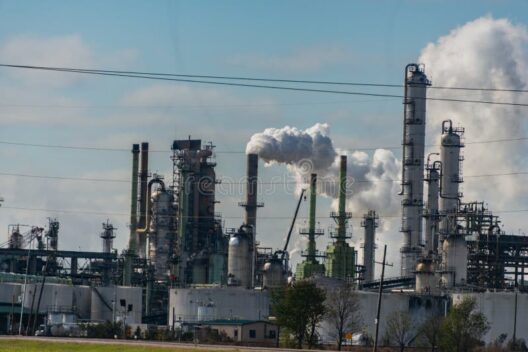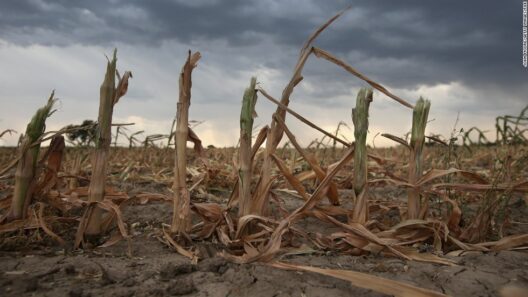Deforestation is akin to a massive exhalation of grief from the Earth’s lungs, releasing carbon into the atmosphere while simultaneously silencing the natural melodies of vibrant ecosystems. This act not only strips away the verdant canopy that shelters an abundance of biodiversity but also accelerates global warming, a phenomenon that can no longer be dismissed as mere scientific prediction—it is a reality permeating every corner of our planet.
To grasp the intricate relationship between deforestation and global warming, it is essential to first understand the role of trees in carbon sequestration. Trees are often referred to as the “lungs of the Earth.” They take in carbon dioxide, a potent greenhouse gas, and produce oxygen, thus fostering a delicate balance in our atmosphere. However, when forests are cleared for agriculture, urban expansion, or logging, this natural process is disrupted. The carbon stored within these trees is released, exacerbating climate change like opening floodgates during a rainstorm.
The connection is not merely direct but multifaceted. The elimination of trees leads to a reduction in evapotranspiration, the process by which moisture is recycled back into the atmosphere. Trees play a pivotal role in maintaining local and even global climates. Without them, temperatures rise, leading to an increase in temperature extremes. This rise can shift weather patterns, induce severe droughts, and amplify the intensity of storms.
Moreover, the act of deforestation often entails the burning of forests. This practice sends plumes of carbon dioxide soaring into the atmosphere, immediate contributors to global warming. It serves as a double-edged sword—deforestation facilitates the burning, and burning further drives the urgency for deforestation. This vicious cycle creates an atmosphere heavy with pollutants, stifling efforts to stabilize climate change.
But the ramifications of deforestation extend beyond climate change. The loss of forests endangers biodiversity, leading to the extinction of countless species. When forests vanish, habitats dissolve, and ecosystems collapse. Each species lost is a fragment of the intricate web of life that contributes to the health of our planet. Biodiversity instills resilience in ecosystems, enabling them to recover from disturbances. With dwindling numbers of species, ecosystems become fragile, further aligning with the narratives of climate change.
Indeed, the biodiversity within forests is as essential as the trees themselves. An average tree hosts an array of lifeforms, from fungi to insects and various larger animals. The intricate relationships formed within this community aid in nutrient cycling, pest control, and disease regulation. When deforestation occurs, it’s not just trees that are lost but the synergistic relationships that help sustain life.
As we unravel this complex tapestry, recognizing the interdependence of all living beings becomes paramount. Deforestation is a local act with global repercussions. For instance, the Amazon rainforest, often dubbed the “world’s lungs,” plays a critical role in global weather patterns. Defiling this vital biome could lead to climate repercussions far beyond the countries where deforestation occurs. This illustrates the concept of “ecological interdependence,” where disturbances in one region can have cascading effects on distant places.
Restoration efforts can serve as a beacon of hope amidst this stark reality. Reforestation and afforestation initiatives can pull carbon back from the atmosphere, healing the planet’s wounds. Planting trees, restoring degraded lands, and protecting existing forests embody proactive strategies to combat climate change. While these efforts require time and resources, the benefits are manifold. Healthy forests can act as buffers against extreme weather, promote soil health, and restore biodiversity, reinvigorating ecosystems.
Furthermore, sustainable forestry practices also represent an essential avenue within this discourse. Responsible logging and agroforestry integrate human needs with environmental well-being. By embracing methods that prioritize ecological integrity, it ensures that forests can continue to provide vital resources while minimizing carbon emissions. Such practices hold the potential to reconcile economic development with environmental stewardship. Herein lies the ideal of a circular economy where renewable resources are prioritized over extractive approaches.
At the intersection of advocacy and action lies the imperative for public awareness. It is vital for individuals to comprehend both the local and global impacts of deforestation. Education serves as a catalyst for change, equipping communities with knowledge tailored to their specific environments. Engaging local populations in conservation efforts cultivates stewardship, creating a sense of ownership that inspires action.
Ultimately, the path towards mitigating global warming through the preservation and restoration of forests is not merely an environmental imperative but a moral one. Recognizing our collective responsibility to care for the planet can forge a sense of unity in the face of climate challenges. As stewards of this Earth, a commitment to protect our forests becomes a commitment to our own future.
As we conclude, the effects of deforestation are undeniably profound; it is a complex puzzle woven into the larger narrative of climate change. It serves as a poignant reminder of the interconnectedness of all living things and the delicate balances of our ecosystems. To address the looming specter of global warming, a concerted effort to halt deforestation and heal our ecosystems is not just necessary—it is vital for the survival of all species on this planet. Our response to this looming crisis will define our legacy, shaping not just the world we live in but also the worlds of generations to come.





